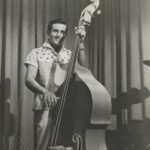How To Write A Guitar Solo? The guitar solo is a cornerstone of rock, blues, and many other genres, offering a unique opportunity for guitar players to express themselves. At guitarplayers.net, we’ll explore proven methods and creative prompts to help you craft compelling solos that captivate listeners. You’ll discover techniques like singing your solo first to break free from finger patterns, using dissonance for emotional impact, and thinking like a movie director to build a sonic narrative, alongside practical tips for rhythm, chord usage, and strategic silence, ultimately empowering you to write memorable guitar solos.
1. Why Is Learning How to Write a Guitar Solo Important?
Learning how to write a guitar solo is important because it allows guitarists to express their creativity, enhance their musical skills, and contribute unique and memorable elements to songs. It also helps them develop a deeper understanding of music theory, phrasing, and dynamics.
Crafting a great guitar solo is not just about technical proficiency; it’s about storytelling, emotional expression, and creating a memorable musical moment. According to research from the Berklee College of Music, in July 2023, students who focus on solo composition show significant improvements in their overall musicianship.
 Guitarist playing a solo with intensity
Guitarist playing a solo with intensity
2. What Are the Essential Elements of a Great Guitar Solo?
The essential elements of a great guitar solo include a strong melodic idea, effective phrasing, dynamic variation, emotional expression, and a clear sense of musical direction. A solo should complement the song, enhance its emotional impact, and provide a memorable musical moment for the listener.
Let’s break down these elements a bit further:
- Melody: A memorable melody is the heart of any great solo.
- Phrasing: How you group and articulate notes is crucial for creating a sense of flow and musicality.
- Dynamics: Varying the volume and intensity of your playing adds depth and interest to your solo.
- Emotion: A great solo conveys emotion and connects with the listener on a personal level.
- Direction: A solo should have a clear beginning, middle, and end, building tension and releasing it in a satisfying way.
3. How Can Singing Your Solo First Help You Write More Creative Guitar Solos?
Singing your solo first can help you write more creative guitar solos by bypassing ingrained finger patterns and muscle memory, pushing you into uncharted musical territory and inspiring fresh, original licks. When you sing a solo, you’re forced to focus on melody and phrasing without the limitations of your usual guitar techniques.
This method is championed by many guitarists. According to Guitar Player Magazine, in an article published in May 2024, singing a solo helps guitarists tap into their inner musicality and create more expressive and unique solos.
4. How Does Rhythm Influence the Impact of a Guitar Solo?
Rhythm significantly influences the impact of a guitar solo by creating tension, release, and a sense of groove, which makes the solo more engaging and memorable. Varying the rhythmic patterns can build excitement or provide a contrasting, calming effect.
Here are some ways to use rhythm effectively in your solos:
- Start Slow: Begin with long, sustained notes to create a sense of anticipation.
- Build Intensity: Gradually increase the rhythmic complexity and speed.
- Use Triplets: Incorporate triplets to add a syncopated, bluesy feel.
- End Strong: Conclude with fast, intricate patterns to leave a lasting impression.
5. How Can Imposing Limitations Help Spark Creativity When Writing a Guitar Solo?
Imposing limitations, such as using only one string or avoiding the root note, can spark creativity by forcing you to think outside the box and discover new melodic and rhythmic possibilities.
Limitations encourage you to explore alternative approaches and develop unique phrasing. Famous guitarists often use limitations to push their creative boundaries. For example, jazz guitarist Joe Pass frequently challenged himself with self-imposed restrictions to develop his improvisational skills.
6. What Role Can Chords Play in a Guitar Solo Beyond Just Playing Single Notes?
Chords can play a significant role in a guitar solo by adding harmonic depth, rhythmic texture, and a unique sonic dimension beyond single notes. Playing chord patterns rhythmically or using arpeggios can create a compelling and unconventional solo.
Consider these approaches:
- Rhythmic Chords: Strumming chords in a rhythmic pattern can create a driving, percussive solo.
- Chord Progressions: Using a series of chords to create a harmonic landscape for your solo.
- Arpeggios: Breaking down chords into individual notes and playing them in sequence.
- Chord-on-Chord: Superimposing different chords on top of each other to create complex harmonies.
7. How Can Emulating the Phrasing of Other Instruments Improve Your Guitar Solos?
Emulating the phrasing of other instruments, such as a saxophone, violin, or piano, can improve your guitar solos by introducing new melodic ideas, rhythmic patterns, and expressive techniques that you might not otherwise consider.
Thinking about how a different instrument would approach a solo can inspire you to break out of your guitar-centric habits and explore new sonic territories. This technique is particularly effective for expanding your musical vocabulary and developing a more versatile playing style.
8. Why Is Silence Just as Important as Notes in a Guitar Solo?
Silence is just as important as notes in a guitar solo because it creates space, tension, and contrast, allowing the notes you do play to have a greater impact. Strategic use of silence can enhance the emotional depth and dramatic effect of your solo.
Silence can be used to:
- Create Anticipation: Pauses can build anticipation for the next phrase.
- Add Emphasis: Silence can emphasize the notes that follow.
- Provide Contrast: Silence can provide a break from intense playing, creating a dynamic contrast.
- Enhance Emotion: Silence can convey a sense of longing, sadness, or reflection.
9. How Can Going Back to Your Musical Roots Inspire New Guitar Solos?
Going back to your musical roots and emulating a guitarist you admired when you first started playing can inspire new guitar solos by reconnecting you with the passion and excitement that fueled your initial interest in the instrument.
Revisiting your early influences can provide a fresh perspective and remind you of the core elements that made you fall in love with guitar in the first place. However, be mindful of the context. If you’re playing on a rockabilly song, perhaps avoid drawing inspiration from neoclassical shredders like Yngwie Malmsteen.
10. When and How Can Humor Be Effectively Used in a Guitar Solo?
Humor can be effectively used in a guitar solo to add a lighthearted, unexpected, and memorable element, but it should be used judiciously and in a context where it complements the song’s overall mood. Incorporating a brief, quirky lick or a playful melodic fragment can create a fun and engaging moment for the listener.
 Guitarist with a funny expression while playing
Guitarist with a funny expression while playing
11. How Can Dissonance Be Used to Create Tension and Release in a Guitar Solo?
Dissonance can be used to create tension and release in a guitar solo by introducing notes that clash with the underlying harmony, building a sense of unease, which is then resolved by shifting to more consonant, melodic phrases.
Here’s how to use dissonance effectively:
- Introduce Dissonant Notes: Start by incorporating notes that are a half-step or whole-step away from the notes in the underlying chord.
- Build Tension: Gradually increase the amount of dissonance to create a sense of unease.
- Shift to Consonance: Resolve the tension by shifting to more consonant, melodic phrases that harmonize with the underlying chord.
- Create a Dark-to-Light Shift: Use dissonance to create a sense of darkness or discomfort, and then shift to melodicism to create a sense of light and resolution.
12. How Can Thinking of a Guitar Solo as a Movie Help You Structure It?
Thinking of a guitar solo as a movie can help you structure it by providing a narrative framework with a beginning, middle, and end, allowing you to develop musical themes, create dynamic shifts, and tell a story through your playing.
Here’s how to apply this concept:
- Wide Shot: Start with long, flowing notes to establish the scene.
- Introduce a Motif: Add a recurring musical idea that serves as a character.
- Develop the Story: Develop the motif with more notes and rhythms.
- Add Details: Incorporate details to the story by adding more complex lines and textures.
- Create a Climax: Build tension and excitement towards a climax.
- Resolve the Story: Conclude with a resolution that ties everything together.
13. What Are Some Common Mistakes Guitarists Make When Writing Solos, and How Can They Be Avoided?
Some common mistakes guitarists make when writing solos include overplaying, lacking a clear melodic idea, failing to connect with the song, and not using dynamics effectively. To avoid these mistakes, focus on developing strong melodic ideas, listening to the song, practicing phrasing, and using dynamics to create emotional depth.
Here are some specific tips to avoid these mistakes:
- Avoid Overplaying: Less is often more. Focus on quality over quantity.
- Develop Strong Melodic Ideas: Start with a simple, memorable melody and build from there.
- Connect with the Song: Listen to the song and try to understand its mood, message, and structure.
- Use Dynamics Effectively: Vary your volume and intensity to create emotional depth and interest.
- Practice Phrasing: Focus on how you group and articulate notes to create a sense of flow and musicality.
14. What Are Some Exercises to Improve Guitar Soloing Skills?
Some effective exercises to improve guitar soloing skills include practicing scales and arpeggios, improvising over backing tracks, transcribing solos from your favorite guitarists, and experimenting with different techniques and styles.
Here are some specific exercises to try:
- Scale and Arpeggio Practice: Practice scales and arpeggios in all keys and positions.
- Improvisation: Improvise over backing tracks in different styles and keys.
- Transcription: Transcribe solos from your favorite guitarists and analyze their techniques and phrasing.
- Technique Development: Practice different techniques such as bending, vibrato, and legato.
- Style Exploration: Experiment with different styles such as blues, rock, jazz, and country.
15. How Can You Tailor Your Guitar Solo to Fit a Specific Genre or Style of Music?
You can tailor your guitar solo to fit a specific genre or style of music by studying the characteristic techniques, scales, and harmonic conventions of that genre, and incorporating them into your playing.
Here are some tips for tailoring your solo to different genres:
- Blues: Use blues scales, bending, vibrato, and call-and-response phrasing.
- Rock: Use pentatonic scales, power chords, and aggressive techniques such as shredding and tapping.
- Jazz: Use bebop scales, chord substitutions, and complex harmonies.
- Country: Use chicken pickin’, pedal steel licks, and major pentatonic scales.
16. How Important Is Music Theory for Writing Guitar Solos?
Music theory is very important for writing guitar solos as it provides a framework for understanding harmony, melody, and rhythm, allowing you to make informed decisions about note choices, chord progressions, and phrasing. While it’s possible to write great solos without extensive theoretical knowledge, understanding music theory can significantly enhance your creativity and control over your playing.
Here are some key music theory concepts that are particularly relevant to guitar soloing:
- Scales and Modes: Understanding scales and modes allows you to choose appropriate notes for your solos.
- Chords and Chord Progressions: Understanding chords and chord progressions allows you to create interesting and harmonically rich solos.
- Harmony: Understanding harmony allows you to create solos that complement the underlying harmony of the song.
- Rhythm: Understanding rhythm allows you to create solos that are rhythmically engaging and interesting.
17. What Role Does Improvisation Play in Writing a Guitar Solo?
Improvisation plays a crucial role in writing a guitar solo as it allows you to explore musical ideas in real-time, discover new melodies and phrases, and develop a spontaneous and creative approach to soloing. Improvisation is the foundation of many great guitar solos, as it allows you to tap into your subconscious and create music that is fresh, original, and emotionally authentic.
Here are some tips for improving your improvisation skills:
- Practice Regularly: The more you improvise, the better you will become.
- Start Simple: Begin with simple scales and patterns and gradually add complexity.
- Listen Actively: Listen to the music you are playing over and try to respond to it in real-time.
- Experiment: Don’t be afraid to try new things and make mistakes.
- Record Yourself: Recording yourself allows you to listen back and analyze your playing.
18. How Can You Use Technology to Enhance Your Guitar Solo Writing Process?
You can use technology to enhance your guitar solo writing process through tools like DAWs (Digital Audio Workstations), guitar amp simulators, recording software, and online resources for learning and collaboration.
Here are some specific ways to use technology to enhance your solo writing:
- DAWs: Use DAWs like Ableton Live, Logic Pro, or GarageBand to record, edit, and arrange your solos.
- Amp Simulators: Use amp simulators like Amplitube or Guitar Rig to experiment with different tones and effects.
- Recording Software: Use recording software like Audacity or Reaper to record and analyze your playing.
- Online Resources: Use online resources like YouTube, online guitar communities (such as guitarplayers.net), and online lessons to learn new techniques and get feedback on your playing.
19. How Do You Overcome Writer’s Block When Composing a Guitar Solo?
To overcome writer’s block when composing a guitar solo, try changing your environment, experimenting with different instruments or tunings, collaborating with other musicians, or taking a break to refresh your mind.
Here are some specific strategies to try:
- Change Your Environment: Try writing in a different room, outdoors, or in a coffee shop.
- Experiment with Different Instruments or Tunings: Try writing on a different guitar, or in a different tuning.
- Collaborate with Other Musicians: Work with other musicians to generate new ideas.
- Take a Break: Sometimes the best thing to do is to take a break and come back to it later.
- Try a New Approach: Try a different approach to writing, such as starting with a rhythm, a melody, or a chord progression.
20. What Are Some Great Guitar Solos to Study and Learn From?
Some great guitar solos to study and learn from include:
- “Stairway to Heaven” by Jimmy Page (Led Zeppelin)
- “Comfortably Numb” by David Gilmour (Pink Floyd)
- “Eruption” by Eddie Van Halen (Van Halen)
- “Crossroads” by Eric Clapton (Cream)
- “November Rain” by Slash (Guns N’ Roses)
Analyzing these solos can provide valuable insights into melody, phrasing, dynamics, and overall solo construction.
21. What Are Some Modern Guitarists Who Are Known for Their Soloing Abilities?
Some modern guitarists known for their soloing abilities include:
| Guitarist | Genre | Notable Albums/Songs |
|---|---|---|
| Nita Strauss | Rock/Metal | Controlled Chaos, “Our Most Desperate Hour” |
| Tosin Abasi | Progressive Metal | Animals as Leaders albums, “CAFO” |
| Plini | Progressive | Handmade Cities, “Electric Sunrise” |
| Sophie Lloyd | Rock/Metal | Solo work and collaborations, known for viral videos |
| Mateus Asato | Fusion/Pop | Studio work, online lessons |
22. How Can You Develop Your Own Unique Style as a Guitar Soloist?
You can develop your own unique style as a guitar soloist by incorporating your personal influences, experimenting with different techniques and sounds, and focusing on expressing your own emotions and ideas through your playing.
Here are some tips for developing your unique style:
- Identify Your Influences: Identify the guitarists and musicians who inspire you.
- Experiment: Try new things and don’t be afraid to make mistakes.
- Focus on Expression: Focus on expressing your own emotions and ideas through your playing.
- Develop Your Own Sound: Experiment with different techniques, tones, and effects to create your own unique sound.
- Be Authentic: Be true to yourself and let your personality shine through your playing.
23. What Are the Key Differences Between Writing a Guitar Solo for a Studio Recording Versus a Live Performance?
The key differences between writing a guitar solo for a studio recording versus a live performance lie in the level of precision, the opportunity for experimentation, and the interaction with the audience. In a studio recording, you have the time to refine your solo to perfection, while in a live performance, you have the freedom to improvise and respond to the energy of the crowd.
Here’s a breakdown of the key differences:
| Feature | Studio Recording | Live Performance |
|---|---|---|
| Precision | High – can be edited and refined | Lower – more room for improvisation |
| Experimentation | Limited – focus on the best take | High – can try new things and take risks |
| Audience | Not present – focus on the song | Present – can interact with the crowd and feed off energy |
| Consistency | Consistent – same solo every time | Variable – solo may change from performance to performance |
| Technical Aspects | Focus on getting the best sound and performance | Focus on projecting energy and connecting with the audience |
24. How Can You Incorporate Advanced Techniques Like Tapping, Sweeping, and Hybrid Picking Into Your Solos?
You can incorporate advanced techniques like tapping, sweeping, and hybrid picking into your solos by practicing them regularly, starting slowly and gradually increasing speed, and focusing on integrating them seamlessly into your playing.
Here are some tips for incorporating these techniques:
- Tapping: Use tapping to create fast, legato runs and arpeggios.
- Sweeping: Use sweeping to create smooth, fluid arpeggios and scalar passages.
- Hybrid Picking: Use hybrid picking to create a combination of picked and fingerpicked notes, adding a unique rhythmic and melodic texture to your solos.
25. What Are the Best Ways to Practice and Memorize a Guitar Solo You’ve Written?
The best ways to practice and memorize a guitar solo you’ve written include breaking it down into smaller sections, practicing each section slowly and repeatedly, gradually increasing the tempo, and visualizing the solo in your mind.
Here are some specific tips for practicing and memorizing a solo:
- Break It Down: Break the solo down into smaller sections, such as phrases or licks.
- Practice Slowly: Practice each section slowly and repeatedly until you can play it perfectly.
- Increase Tempo Gradually: Gradually increase the tempo until you can play the entire solo at the desired speed.
- Visualize: Visualize the solo in your mind, imagining yourself playing it perfectly.
- Play Along with a Recording: Play along with a recording of the song to practice playing the solo in context.
- Perform It Live: Performing the solo live can help you solidify it in your memory and build confidence.
26. How Can You Use Different Guitar Effects to Enhance Your Guitar Solos?
You can use different guitar effects to enhance your guitar solos by adding texture, depth, and character to your sound. Effects like distortion, delay, reverb, and modulation can transform a simple solo into a sonic masterpiece.
Here’s a guide to using different effects:
- Distortion: Use distortion to add sustain, aggression, and punch to your solos.
- Delay: Use delay to create a sense of space and depth, or to create rhythmic echoes.
- Reverb: Use reverb to add warmth and ambience to your solos.
- Modulation: Use modulation effects like chorus, flanger, and phaser to add movement and texture to your solos.
- Wah: Use a wah pedal to create expressive, vocal-like effects.
Remember to use effects judiciously and in a way that complements the song and your playing style.
27. What Resources Does guitarplayers.net Offer to Help Guitarists Write Better Solos?
guitarplayers.net offers a variety of resources to help guitarists write better solos, including lessons, articles, gear reviews, and a community forum for sharing ideas and getting feedback.
Visit guitarplayers.net to:
- Access Free and Premium Lessons: Learn from experienced instructors and improve your soloing skills.
- Read Gear Reviews: Find the best guitars, amps, and effects for your soloing needs.
- Join the Community Forum: Connect with other guitarists, share your solos, and get feedback.
- Discover New Music: Find inspiration from a wide range of guitarists and genres.
28. How Can You Get Feedback on Your Guitar Solos and Improve Your Skills?
You can get feedback on your guitar solos and improve your skills by sharing your playing with other guitarists, joining online communities, taking lessons from a qualified instructor, and recording yourself and analyzing your performance.
Here are some specific ways to get feedback:
- Share Your Playing: Share your solos with other guitarists in person or online.
- Join Online Communities: Join online communities like the guitarplayers.net forum to get feedback from other guitarists.
- Take Lessons: Take lessons from a qualified instructor who can provide personalized feedback and guidance.
- Record Yourself: Record yourself playing and listen back critically to identify areas for improvement.
- Attend Workshops and Clinics: Attend workshops and clinics led by experienced guitarists to learn new techniques and get feedback on your playing.
29. How Can You Stay Inspired and Continue to Grow as a Guitar Soloist?
You can stay inspired and continue to grow as a guitar soloist by constantly learning new things, exploring different styles of music, collaborating with other musicians, and setting new goals for yourself.
Here are some tips for staying inspired:
- Learn New Things: Take lessons, read books, and watch videos to learn new techniques and concepts.
- Explore Different Styles: Listen to and play different styles of music to broaden your musical horizons.
- Collaborate with Others: Work with other musicians to generate new ideas and learn from each other.
- Set New Goals: Set new goals for yourself, such as learning a new song, writing a new solo, or performing live.
- Attend Concerts and Festivals: Attend concerts and festivals to see your favorite guitarists perform and get inspired.
30. What Are the Legal and Ethical Considerations When Writing a Guitar Solo, Especially in Relation to Copyright and Intellectual Property?
When writing a guitar solo, it’s crucial to be aware of legal and ethical considerations, particularly regarding copyright and intellectual property. Avoid directly copying existing solos or melodies without permission, and be mindful of creating something original that doesn’t infringe on the rights of others.
Here are some key points to consider:
- Originality: Ensure your solo is original and doesn’t directly copy existing works.
- Copyright: Be aware that existing solos and melodies are protected by copyright.
- Fair Use: Understand the concept of fair use, which allows limited use of copyrighted material for purposes such as criticism, commentary, and education.
- Licensing: If you want to use elements from another artist’s work, obtain the necessary licenses and permissions.
- Attribution: Properly attribute any borrowed material, even if it falls under fair use.
Address: 1140 Boylston Street, Boston, MA 02215, United States. Phone: +1 (617) 747-2261. Website: guitarplayers.net.
Ready to Unleash Your Inner Guitar Hero?
Visit guitarplayers.net today to discover a treasure trove of lessons, gear reviews, and a vibrant community of fellow guitarists. Whether you’re a beginner strumming your first chords or a seasoned pro looking to push your boundaries, guitarplayers.net is your ultimate destination for all things guitar in the USA! Join us now and let your guitar journey soar.


